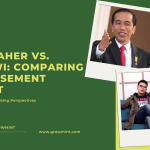
Jakarta, 1 February 2016 – Do people still read? Eight in ten Indonesians still read every day. This has been proven to be true based on the latest findings conducted by Inside.ID, one of the creative research firms under Growinc Indonesia.
“Online media platforms, such as the internet, social media, online newspapers and magazines are currently considered as the top preferred news sources by Indonesian people”, said Andreas Siahaan, Inside.ID Head of Creative Research.
Andreas claimed that these research findings conducted in the third to the fourth quarter of 2015, revealed that Indonesians tend to have a particular reading habit. Statistics showed that the internet was chosen to be the most favourable platform to fetch news updates.
“More than 92% of our respondents expressed that the internet becomes the number one priority to look up for news. As 82% of the respondents have the tendency to watch news on the television. Whilst 45% of the respondents still count on newspapers as being relevant in providing news for them”, stated Andreas.
Why Do Printed Newspapers Still Exist?
The findings made by Inside.ID were seen to be able to address the problems and concerns of several related parties regarding to why printed newspaper and magazine demands have declined – threatened by the penetration of digital media that becomes more essential in the lives of consumers. Based on the research, there is another interesting fact regarding to the reason why these respondents still read printed newspapers.
Andreas added, “We discovered that Indonesian men are more likely to read printed newspapers compared to women. Also, a lot of men love reading the newspapers over coffee or tea. Turns out that the habit of leisurely flipping the newspaper pages while drinking coffee or tea has not been abandoned yet.”
Andreas also explained that unlike men, women prefer to read the news through online media by using their mobile devices. He said, “Indonesian women prefer to read while doing other activities. Not while drinking tea or coffee, but they tend to read news while browsing on social media or amid snacking.”
Aside from these opposite habits that men and women do, there is also a difference in time preference on catching up the news between these two genders. Findings revealed that women read the news more productively during night time, while in contrast men prefer to read the news in the morning.
Research findings also showed that overall, a higher number of people read the news in the morning compared to night time”, reported Andreas. He also explained that the majority of people read news between 6 to 9 in the morning and 6 to 12 in the evening, in specifically men are more likely to read in the morning (6-9 am), and women prefer at night (6 pm – 12 am). These particular habits are caused by the reason that printed newspapers are usually published in the morning, while on the other hand, news updates are frequently uploaded on online media in night time.
“In other words, men read the news to kick start their day while in contrast, women read news to end the day,“ concluded Andreas.
*Click below to view the info-graphic version:
Indonesians News Reading Habits , by Growinc Indonesia
Source: Kebiasaan-kebiasaan Dalam Membaca Berita, Inside.ID 2016
—————————————————————————————————————————————–
About Inside.ID
Inside.ID is a marketing research institution that serves in-depth insights on studying behaviours of Indonesians through various aspects. Using an innovative methodology, Inside.ID analyse and comprehend the ever-changing needs of different industries from the consumers’ eyes and perspectives.
About Growinc Indonesia
Growinc Indonesia is an independent full-service advertising agency that is composed by three subsidiaries, which are Non-Fiction as creative research unit, Growmint as a creative digital campaign unit, and Adlabs as a measured digital performance unit. Since establishment, Growinc Indonesia has been trusted by various brands in the industry to handle their advertising and marketing communication strategy, both in local and international scope. Including automotive, telecommunication, airlines, banking & finance, and insurance companies.




